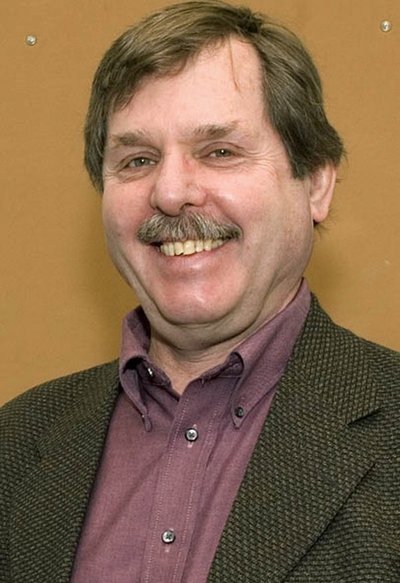February 9, 2006
New emergency management class seeks ‘informed citizenry’ on disaster matters
There’s going to be a major earthquake at the UW next quarter, but don’t worry, it won’t be real. The actual big earthquake will come — well, no one knows when.
So it’s good to be prepared, and as fully informed as possible. And that’s exactly what Robert Freitag’s spring quarter class for undergraduates is all about.
The course’s self-explaining title is “The Field of Emergency Management: Taking Control of Our Lives and Institutions in a Changing World.” The class, Freitag said, will investigate the role of the local and regional government, the University administration and individual citizens in the event of disasters both man- and nature-made.
Freitag’s syllabus summarizes the parameters of the class: “In this course students will be given an opportunity to apply a wide range of risk reduction tools to solve real problems. This practice will help students manage their everyday lives as well as enhance their future careers. These tools range from exploring simple ways to avoid personal harm from earthquakes to preparing risk analyses and designing complex evaluation exercises.” The interactive course also will feature speakers from the world of emergency management, in public and private capacities.
And the earthquake? It will be the culminating effort of the class, Freitag said, after his students have studied disasters and disaster preparation from several angles and even evaluated the UW’s existing disaster plan, combing through it for weaknesses.
“On the last day of class we’ll do a table-top exercise pretending that there is an earthquake and talking about what students should do during that period, and talking about what the campus administration should or could have done,” Freitag said.
“We’ll gather around a table and virtually destroy the campus in increments by earthquakes, and expect the students to talk about how they will respond and recover from that.” The process will end, he said, with the class writing a position paper for (UW Emergency Management Director) Steve Charvat, describing what weaknesses the students may have found in the campus plan.
Freitag is well qualified to teach the class, to be sure. He’s the director of the Institute for Hazards Mitigation Planning & Research in the College of Architecture & Urban Planning, and before that spent 25 years in high-level positions at the Federal Emergency Management Administration (FEMA).
He said the idea for the class came when he was chatting at a conference some time back with Jim Mullen, Washington state director for emergency management. “He said, ‘We need to talk to undergraduates about this — emergency management is everybody’s concern at this point, and we should have a course for undergraduates,'” Freitag recalled.
He then took the idea to Charvat, who was equally interested, and suggested making the class broad enough to embrace many types of disasters and how they involve government and the planning community as well.
The course will be more than just a survey of emergency management practices, though it will be an effective opener for students who might want to pursue study along those lines. The end goal of the class, Freitag said, is “not to scare people but to prepare them … to give them intelligent tools in their lives and careers to reduce risk.”
Mullen, the state’s top emergency management professional, cited two powerful reasons for expanding undergraduate study of emergency management, in this class and other venues: “The first thing we need, beyond an influx of bright young people in this system, is a citizenry that understands its role.”
Part of that role, he said, was to understand what services government could and could not reasonably be expected to provide, and in what time frame, “and how to contribute to the protection of the community.”
Mullen said that young schoolchildren are still trained to “drop, cover and hold,” and practice it through eighth grade, “and then we stop teaching them anything at all. When they go to high school, we don’t teach them anything.”
And though earthquakes are at the center of the class syllabus, clearly, the course’s approach applies to terrorist-caused disasters, too — about which Mullen has strong feelings. “If nothing happens, people will be lulled into a false sense of security … but (terrorists) are not on our time frame, and we need to be prepared.”
Asked about FEMA’s perceived drop in credibility since Hurricane Katrina, Freitag said the trouble the federal agency had was caused by lack of support, not incompetence. “What happened was that FEMA was very strong and this administration, the White House, did not give it the stature it had before. It’s not FEMA’s fault — the Department of Homeland Security got all the attention, and terrorism got all the attention,” he said. “The brightest and sharpest were not assigned by this president to work for FEMA.”
Freitag said the new class has the strong support from his dean — Fritz Wagner, whose last position was at the University of New Orleans — and of Hilda Blanco, chair of the Department of Urban Design and Planning, who also heads an online master’s program in Strategic Planning and Critical Infrastructures.
Charvat, the UW’s own top emergency management official, praised the class plan for providing “fresh eyes” to the campus emergency plan. “Emergency management at the UW is only two and a half folks, so there are a lot of things we could really use some hands and brainpower on to help us.
“I’m not saying we’ll be able to implement them all, but it will help validate things we already know and perhaps make suggestions based on having people who are not in the trenches every day and see things with a slightly different perspective.”

